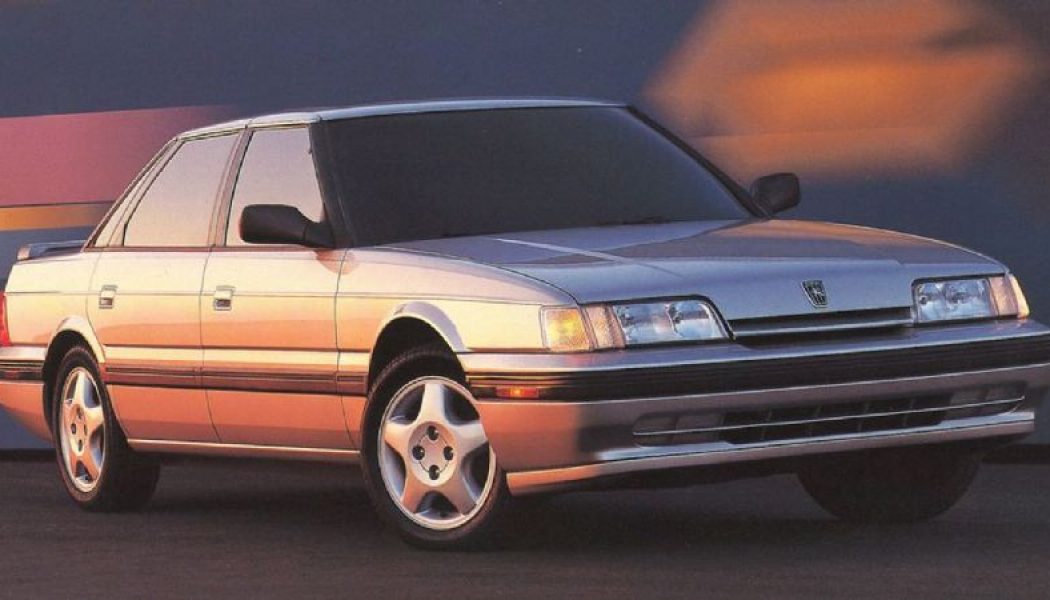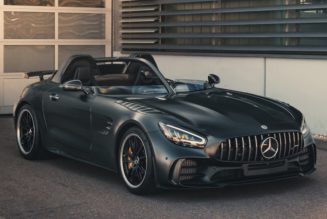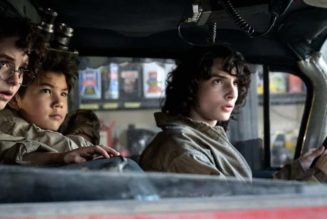Some “terrible” cars weren’t actually terrible, and rides like the AMC Gremlin and Ford Mustang II have an undeservedly reputation for being bad. But some terrible cars truly do deserve every ounce of scorn sent their way, including the ill-fated Anglo-Japanese mashup at the center of this piece, the Sterling 825. It was a car that had every opportunity to be great, but turned out to be one of the worst cars ever sold in America.
Honda and Rover—an Unlikely Partnership
Back in the 1980s, the Austin-Rover Group—refugee from the wreckage of British Leyland—had found some success in its home market by selling rebadged Hondas, first as the Triumph Acclaim and later as the Rover 200. ARG needed a replacement for the aging full-size Rover SD1, and was itching to get back into the American market. The timing was perfect: Reagan and Thatcher were BFFs and Charles and Di’s wedding had charmed America, a country developing a taste for European luxury cars. Jaguar sales were picking up, so why couldn’t Austin-Rover enjoy the same success?
Meanwhile, Honda was facing voluntary quotas in the U.S. market and needed to improve profitability. It saw a big luxury sedan as the way to do that. Together, Honda and Austin-Rover embarked on a project that would produce the Acura Legend and the Rover 800, the latter of which would be sold in the U.S. under a new marque: Sterling.
Acura Legend and Sterling 825: Go Your Own Way
Honda and Austin-Rover weren’t looking to build a badge-engineered vehicle; instead they collaborated on behind-the-scenes components and individualized the cars as needed. Honda developed the powertrain; ARG engineered the structure and suspension. The body-in-white, powertrain, driveline, seat frames, climate control, and other such parts were shared, but when it came to suspension tuning, sheetmetal, and interior design, the two companies went their separate ways.
Among other things, that meant that each company was responsible for its own electrical system. If you know anything about British cars, you don’t need to read any further to know how this story ends.
Honda launched the Acura Legend for the 1986 model year, and the reception was predictably favorable. American buyers who had developed a taste for Japanese quality and efficiency loved the car. The newly formed ARCONA (Austin-Rover Corporation of North America, the official importer for the Sterling) expected similar success for the Sterling, and why not? After all, the Legend and the Sterling were the same car. Almost.
A British-Built Car Made Like a Honda?
ACRONA gleefully told an understandably skeptical press that ARG’s plant in Cowley, England, could produce the same quality as Honda, and in fact would build Legends and Sterlings side-by-side. The January 1987 issue of our sister publication Automobile featured as part of its Sterling review a two-page spread espousing the factory’s robotized body assembly line and the thorough battery of quality checks and tests to which each example would be subjected. Even editor-in-chief and journalist icon David E. Davis Jr. took the bait, writing that “Legend and Sterling are built on the same assembly lines and enjoy identical levels of quality.”
Except that wasn’t quite the whole story. While European-market Legends were indeed built at Cowley—with a Honda-designed electrical system, mind you—those Legends bound for quality-obsessed America were made in Japan. Clearly, Honda wasn’t taking any chances.
A Promising Start for a Terrible Car
Though European journalists were measured in their praise of the Rover 800, the Sterling 825 saw more favorable reviews in the States, where it was seen as an Acura Legend with a much-needed dose of personality. Reviewers liked the Connolly leather and the burled-walnut trim and the British-tuned handling. At first, that is.
One of the problems with new-model launches is that we only get a few days (or sometimes a few hours) with the car. Automobile staffers of yore were understandably wary of British quality, so they ordered a Sterling 825SL for a long-term evaluation. What they learned was that just as the sun once never set on the British Empire, it still didn’t set on badly built English cars.
With the hindsight of history, we know what happened: Despite ARG’s and ARCONA’s promises, quality was abysmal. It was almost amazing that two cars so similar in lineage could be so far apart in execution, and yet there it was: The Acura Legend shot up to the top of J.D. Power’s quality surveys, while the Sterling 825 sat near the bottom.
Just How Bad Was the Sterling 825?
In case you think we’re exaggerating, here’s a list of the problems that Automobile’s long-term Sterling 825 had addressed over the course of its nine dealership visits:
- 2,321 miles: Fuel gauge broken, glove box sticking, steering wheel off center, cruise control inaccurate, door molding adrift, coolant warning light flashing, tires out of balance.
- 3,751 miles: Windshield leaking, fuel gauge working but incorrect.
- 6,544 miles: Sunroof not opening, windshield washers not working.
- 7,006 miles: Dashboard light and passenger seat lumbar support broken, fuel gauge incorrect (2nd time), trunk trim loose.
- 7,609 miles: Driver seat adjustment not working.
- 8,886 miles: Coolant and fuel gauges not working (again), driver seat lumbar and power mirror switch inoperative, brake warning light stuck on, passenger seat belt not retracting, steering wheel off center, grille falling off, fuse box door falling open.
- 15,769 miles: Hood and trunk releases stuck, passenger seat belt not retracting (2nd time), heater button fallen off, passenger lumbar support not working (again), key-in-ignition chime intermittent.
- 17,565 miles: Sunroof not opening (again), coolant gauge faulty (again), fuel gauge faulty (5th time).
- 24,508 miles: Sunroof, coolant gauge, fuel gauge inoperative (3rd, 3rd and 6th time, respectively), ignition key sticking, ashtray sticking.
These were only the problems that the magazine bothered to have fixed. There were others: The burled walnut trim developed an eight-inch crack above the glovebox and a six-inch split behind the gear lever. The shifter knob came loose three times. The stereo’s volume went from a reasonable 60 decibels to an ear-bleed-inducing 120 dB with a mere quarter-inch turn. The trunk release required both hands to pull. The body cladding behind the rear wheels worked its way loose on both sides.
The plastic cover housing the emergency crank for the sunroof fell off twice, coincidentally the same number of times that the plastic housing for the rear center-mounted brake light came off. The cruise control selected speeds 8 to 10 mph different from its setting, and using two electric windows at the same time caused the engine speed to drop 500 rpm.
Writer John Phillips, the author of the wrap-up story, called this auxiliary list “a variety of maladies that nobody had the energy or enthusiasm to tackle.” Though the Sterling never stranded anyone, by year’s end staffers were refusing to take it on long out-of-state trips. By Phillips’s estimation, the fuel gauge was inoperative for six of the twelve months Automobile had the car.
…And It Wasn’t Just Them
That experience was not unique. Before it learned about the litany of failures, an ARG spokesman reported “line fixes” to a variety of components that nearly matched Automobile‘s repair list word-for-word, most of which were implemented for late-1987 and later cars. ARG was desperately trying to save the car’s reputation.
“We know that the driving experience in a Sterling is practically perfect,” an executive (who asked not to be named) told Automobile at the time. “It’s a fun car to drive. But that’s quite separate from the ownership experience, and it’s quite separate from our own service record. I hope it’s not too late to prove ourselves.”
But it was too late. Sterling resale values plummeted, and so did sales. Sterling sold 14,171 cars in 1987, while Acura moved 54,713 Legends. In 1988, Legend sales rose to nearly 71,000, while Sterling sales dropped to 8,901. In 1989, Sterling introduced the new 827 model, denoting a bigger 2.7-liter V-6, but sales continued to shrink. For 1990, the $23,300 Sterling 827 was offered with a $6,000 cash back offer, possibly the biggest rebate ever offered on a car to that point.
But quality wasn’t improving enough to make a difference, and now the Sterling was facing new, high-quality competition from Lexus and Infiniti. Sterling sold just 4,015 827s in 1990. In August, 1991, the recently-renamed Rover Group announced that it was killing off the Sterling marque in the United States. Few Sterlings of any stripe remain, though true sadists can occasionally find one at auction.
The Sun Never Sets
Of course, it wasn’t all dark days for English cars. In the same January 1987 issue in which Automobile first tested the Sterling 825, it tried out another British vehicle, the Range Rover, which after years of gray-market import was officially coming to the States. (At the time, Land Rover and ARG were independent divisions of the Rover Group.) We all know how that worked out. Quality issues would continue to plague English cars, of course, but never to the level of the disastrous Sterling 825.
Jaguar and Land Rover quality was always far from perfect, but those brands never suffered the ignoble fate of Sterling. Why? Perhaps people just expect British cars to be badly built, and the Honda connection meant the public had unnecessarily high hopes for the Sterling. But that same connection should have made the Sterling 825 great—and instead it turned out to be one of the most terrible cars ever sold in America.
| 1987 Sterling 825 Specifications | |
| PRICE: | $23,000 (base) |
| ENGINE: | 2.5L SOHC 24-valve V-6/151 hp @ 5,800 rpm, 154 lb-ft @ 4,500 rpm |
| TRANSMISSION: | 5-speed manual |
| LAYOUT: | 4-door, 5-passenger, front-engine, FWD sedan |
| EPA MILEAGE: | 16/22 mpg (city/highway) |
| L x W x H: | 188.8 x 76.8 x 54.8 in |
| WHEELBASE: | 108.6 in |
| WEIGHT: | 3,219 lb |
| 0-60 MPH: | 8.8 sec (est) |
| TOP SPEED | 130 mph |










